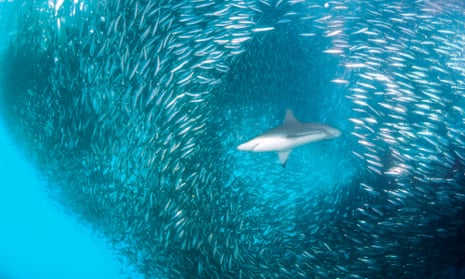From 20 September, the UN’s high seas treaty will at last be open for signatures – an important moment that starts the process for nations to ratify it into their own laws. At least 60 countries must do so for the treaty to come into force. Scientists hope that it will finally allow marine protected areas (MPAs) in the high seas to be established.
Conservationists are urging governments to act quickly. Fishing hours on the high seas rose by about 8.5% between 2018 and 2022, according to estimates published this week by Greenpeace using data from Global Fishing Watch. The high seas are areas of the ocean that lie beyond any national jurisdictions and, as such, have no legal protections. They cover nearly 50% of the planet and house a variety of unique ecosystems. Yet many high seas areas are under threat not just from overfishing, but also pollution, the climate crisis and damage from shipping and deep-sea mining.
“The high seas make up two-thirds of the world’s ocean so it’s absolutely critical that we start establishing MPAs,” says Rebecca Hubbard, director of the High Seas Alliance. The alliance is a partnership of 52 NGOs, plus the International Union for the Conservation of Nature, that has done a lot of work identifying some of the biodiversity hotspots on the high seas that need priority protection.
It has some ideas on where to begin.
The Costa Rica thermal dome
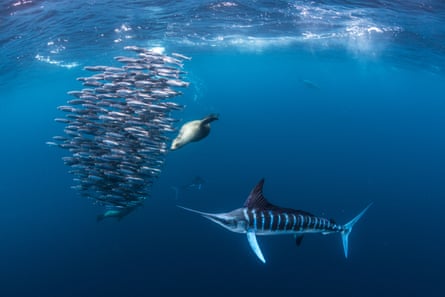
The Costa Rica Thermal Dome in the eastern Pacific Ocean is a diversity hotspot. The “dome” forms when warm waters from the coast meet cooler waters carried by ocean currents, causing an upswell. This brings nutrient-rich waters from the sea’s depths to its surface, creating the perfect conditions for a blue green algae to grow.
The phytoplankton that feed on the algae are the start of a rich marine food web, supporting species such as marlins, sea turtles and blue whales, which breed and raise their young in these waters.
The area is under threat particularly from overfishing, plastic pollution and shipping on its way to the Panama Canal.
White shark cafe
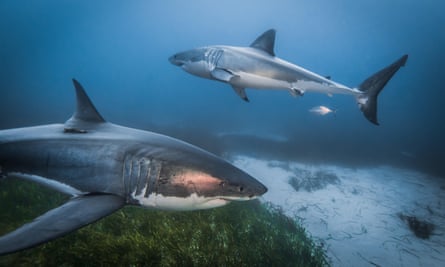
In the Pacific Ocean, about halfway between Hawaii and the North American mainland, is the only known meeting spot for north Pacific white sharks, known as the white shark cafe.
These predators make a “winter pilgrimage” to the area from breeding grounds along the North America coast, to feed and loiter. Scientists observe tagged sharks in the area, including doing rapid dives up to 450 metres deep before returning quickly to the surface.
Sargasso Sea

This area of the Atlantic Ocean, known for its clumps and mats of sargassum seaweed, is about 3,200km long and 1,100km wide. It is nicknamed the “golden rainforest of the high seas” thanks to its rich biodiversity and because it acts as a carbon store.
The seaweed here is home to more than 120 species of fish, 145 invertebrate species, 26 seabird species and other unique animals such as the sargassum frog fish. Marlins and dolphinfish spawn here; white sharks breed here; endangered turtles such as the hawksbill and loggerhead live here; and all American and European eels start life here.
But the area is at risk of overfishing, pollution, shipping traffic and a garbage patch.
“The Sargasso Sea is also experiencing significant effects from the climate crisis, with a 5,000-mile belt of free-floating sargassum seaweed – dubbed the Great Atlantic Sargassum Belt – which risks impacting the Sargasso Sea and wreaking havoc on coastal ecosystems and tourism,” says Dr Simon Walmsley, chief marine adviser to the World Wide Fund for Nature (WWF) UK.
The Lost City hydrothermal field

“The Lost City hydrothermal field is a remarkable geobiological feature … in the deep sea (700-800 metre water depth) that is unlike any other ecosystem yet known on Earth,” according to a 2016 report by Unesco. But it is under threat, particularly from deep-sea mining.
The site was discovered in 2000 during a dive in the mid-Atlantic ridge. There are 30 huge hydrothermal vent chimneys rising from the seafloor. The largest, known as Poseidon, is 60m high.
The chimneys are formed when seawater reacts with rock in the Earth’s mantle and is heated by magma. As the water warms and the pressure rises, minerals begin to dissolve in it. The water then rises and exits into the ocean. When the hot water meets cold sea water, it cools, forming mineral deposits that build the chimney-like structures.
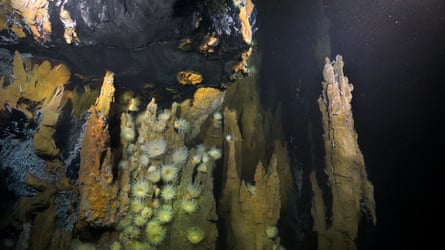
Although it’s a harsh environment, the area is teeming with everything from microorganisms and snails to crabs and jellyfish.
The site has already been recognised as an ecologically or biologically significant marine area under the convention on biological diversity, a Mission Blue “hope spot”, and a high seas gem by the Marine Conservation Institute.
The Salas y Gómez and Nazca ridges
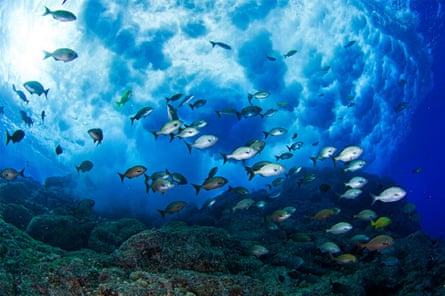
These two chains of underwater mountain ridges sit deep in the clear waters of the south-east Pacific. They contain many species of ecological importance – from rare turtles to commercial food sources such as swordfish and jack mackerel – and are migration corridors for at least 82 endangered species.
The ridges’ biodiversity is threatened by everything from deep-water trawling to damage from floating plastic debris in the South Pacific gyre and possible future mining exploration.
However creating MPAs needs careful thought, according to experts. The establishment, governance and management of such areas should be “inclusive, equitable and human rights-based … underpinned by broad community and stakeholder support,” says Walmsley. This includes balancing ecological benefits and local social and economic circumstances, he adds.
Alexander Killion, managing director of the Centre for Biodiversity and Global Change at Yale University, says: “It is important that new protected areas are prioritised to serve the species that we know are most in need of protection,” while also helping to meet carbon and climate goals, which can prevent further loss of habitat.
There is also significant work to do to map the distributions of marine species that are underrepresented – and their habitats – to prevent future extinctions, he adds.
Walmsley recommends designing a network of MPAs – an idea also noted in the Greenpeace report – that protect a representative range of marine habitats, species and ecological processes (including migration corridors).
“Marine species know no borders,” he says. “So a network of MPAs that aid ecological connectivity and protect transboundary and migratory species – such as whales, turtles, sharks and tuna – is going to be essential for effective long-term protection, especially when trying to adapt to the climate crisis.”
